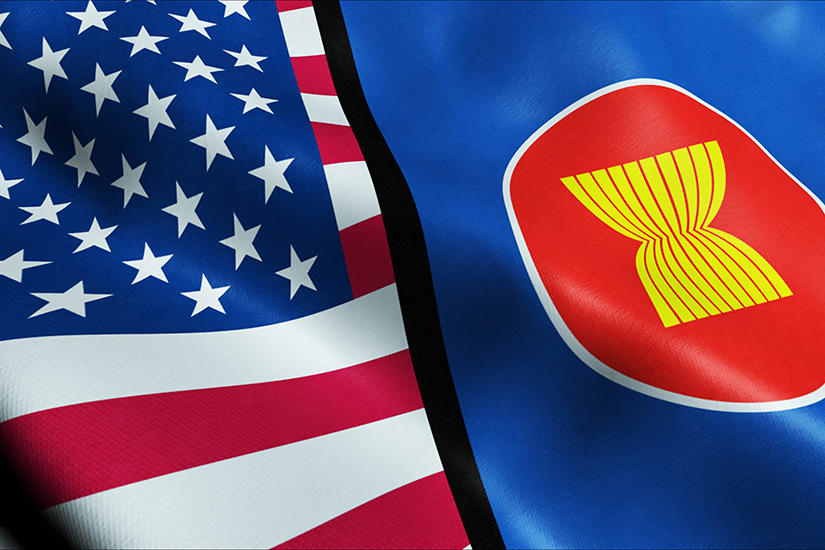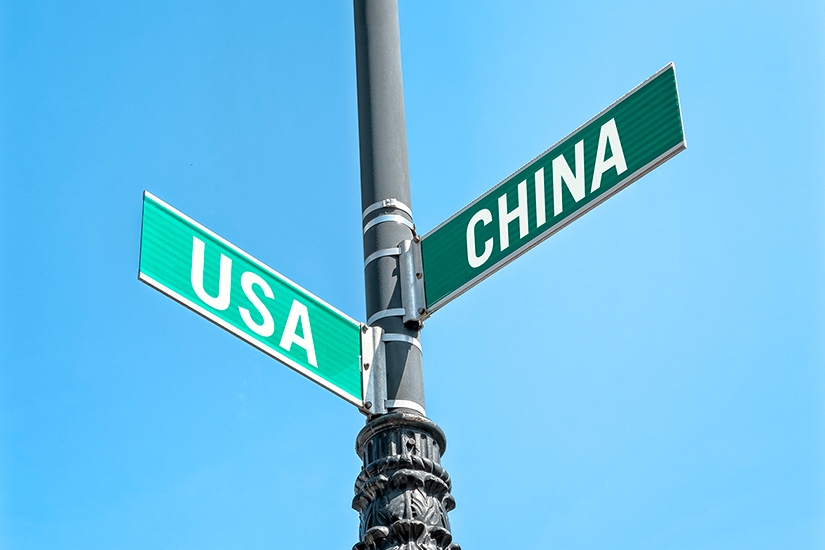It has been nearly three years since the Biden administration in the United States was inaugurated in January 2021. As a global power, the United States is (forced to be) involved in international problems arising throughout the world such as in China, Ukraine, Gaza, and many more, but the Biden administration has advanced the strengthening of relations with Southeast Asia and the Association of Southeast Asian Nations (ASEAN) mainly as part of its Indo-Pacific Strategy. The foreign policy of the United States, which is formulated and implemented at a variety of levels, including the global, regional, and bilateral levels, has had a direct and indirect impact on ASEAN. For that reason, the messages being sent by the policies of the United States have been jumbled at times, putting ASEAN off balance. This short review teases apart the jumbled messages of the United States to decipher the basic stance in the Biden administration’s ASEAN policies that emerges from those messages.

The initial ASEAN policies when the administration was inaugurated ― a disappointing response
When the Biden administration was inaugurated, ASEAN expected that the United States would engage in this region “in a manner desired by ASEAN.” This expectation was born from the experience of being at the mercy of the previous Trump administration, which disregarded ASEAN’s multilateralism, and was also nostalgia for the Obama administration two administrations before. During Obama’s presidency the United States respected ASEAN’s multilateralism and the President visited countries in Southeast Asia almost every year to attend the East Asia Summit (EAS). Furthermore, in the economic realm, the United States led the Trans-Pacific Partnership (TPP) and sought to build a multilateral economic cooperation system in the Asia-Pacific region, including Southeast Asia. For ASEAN, engagement in cooperation based on multilateralism is a desirable approach for the United States to take, and ASEAN wanted Biden, who was vice president during the Obama administration, to adhere to that stance.[1]
However, the initial response of the Biden administration when it was inaugurated was disappointing. Approximately six months after the inauguration, there had been no particular approach from the United States to ASEAN, so it was obvious that this region was not a top priority for Biden’s diplomacy. Following “neglection” for the first six months, the Biden administration’s ASEAN diplomacy finally began in earnest. In July 2021 Secretary of Defense Austin visited Singapore, Vietnam, and the Philippines and in the following August Vice President Harris visited Singapore and Vietnam again. Furthermore, President Biden himself attended the ASEAN-U.S. Summit and the EAS in October, albeit virtually. Moreover, Secretary of State Blinken visited Indonesia and Malaysia in December. Visits by top officials in the Biden administration became intensive in this way as if the administration was trying to make up for the initial delay.[2]
Jumbled messages throw ASEAN off balance
Separately from its approach to ASEAN, the United States strengthened minilateral cooperation in the Indo-Pacific and stepped up democracy diplomacy globally. Some of these moves threw Southeast Asia off balance.
At the Quad Leaders’ Meeting held in May 2023 the four countries of Japan, the United States, Australia, and India reaffirmed their consistent and unwavering support for ASEAN centrality and unity and their continued support for implementation of the ASEAN Outlook on the Indo-Pacific (AOIP).[3]Although ASEAN largely viewed this stance of the Quad favorably, it was concerned that AUKUS would hinder the goal of ASEAN to make the Southeast Asia region a nuclear-free zone and might destabilize the entire Indo-Pacific region, including ASEAN, by increasing military tensions between the United States and China.[4]
Furthermore, the democracy diplomacy of the Biden administration sorted the ASEAN countries into different categories. When the United States hosted the Summit for Democracy in December 2021, only the three countries of Indonesia, Malaysia, and the Philippines were invited from ASEAN and only Indonesia and the Philippines among ASEAN countries participated in the second summit in March 2023.[5]The opposed axes of democracy versus non-democracy presented by the United States sent a negative message for the unity of ASEAN and for United States-ASEAN cooperation.
ASEAN’s multilateralism ― from emphasis to disregard?
In 2022 the United States occasionally presented a stance emphasizing ASEAN. The Indo-Pacific Strategy announced by the White House in February that year strongly advocated for ASEAN, stating that the United States welcomes a strong and independent ASEAN that leads in Southeast Asia, endorses ASEAN centrality, and supports ASEAN in its efforts to deliver sustainable solutions to the region’s most pressing challenges.[6]Furthermore, the ASEAN-U.S. Special Summit 2022 was held in Washington in May, and the Joint Vision Statement announced at the summit was guided by the “EAS Declaration on the Principles for Mutually Beneficial Relations” while comprehensively incorporating eight fields of cooperation, including fighting COVID-19, economic ties and connectivity, and maritime cooperation.[7]Next, in November, the ASEAN-U.S. Summit was held in Cambodia and President Biden attended. At the meeting, it was loudly declared that the relations of the two parties would be upgraded to a Comprehensive Strategic Partnership.[8]
However, after the upsurge in diplomacy in 2022 there was a turnaround and the ASEAN diplomacy of the United States was lackluster in 2023. President Biden attended the G20 summit held in New Delhi in September, but he did not attend the series of ASEAN-related meetings including the EAS held in Jakarta, with Vice President Harris attending instead of him. The absence of President Biden fueled a variety of speculations such as that the United States was disregarding ASEAN, that it was disregarding Indonesia, the holder of the ASEAN chairmanship, that it was tilting ASEAN and Indonesia toward China, that the priority of the foreign policy of the United States was bilateral and minilateral cooperation with its allies and partners, that the United States was disappointed with the dysfunction of ASEAN concerning its response to the Myanmar problem, and many more.[9]

Bilateral rather than multilateral?
The most noticeable diplomatic moves in 2023 were instead marked by an emphasis on bilateral relations, with China in mind. After attending the G20 Summit in New Delhi, President Biden headed to Hanoi, Vietnam rather than Jakarta. On the occasion of President Biden’s visit to Vietnam, the leaders of the two countries declared that United States-Vietnam relations would be upgraded to a Comprehensive Strategic Partnership. This is the highest level in the external relations of Vietnam, and the United States becomes the fifth country after China, Russia, India, and South Korea to conclude such a partnership. Furthermore, this means that the United States was upgraded two stages, skipping the stage of a Strategic Partnership, ten years after the two countries concluded a Comprehensive Partnership in 2013. Cooperation with the United States is essential for Vietnam, which has the problems in the South China Sea in mind, and Vietnam is important for the United States in its strategies with respect to China and its Indo-Pacific Strategy. On the occasion of this visit by the President to Vietnam the topics of China and the South China Sea were carefully avoided, but the two countries agreed to strengthen cooperation concerning the supply chain for semiconductors and critical minerals.[10]The fact that they advocated strengthened cooperation from the perspective of economic security amidst great power competition showed that the central interest of both countries was indeed China.
With the South China Sea and Taiwan in mind, the United States also continued to strengthen its relations with the Philippines, an ally. In February 2023, Secretary of Defense Austin visited the Philippines and clearly stated that the scope of application of the U.S.-Philippines Mutual Defense Treaty extended to the Philippine armed forces, public vessels, and aircraft in the South China Sea, and in addition the two parties agreed to the United States armed forces using four new sites of the Philippine armed forces in addition to the existing five sites, based on the Enhanced Defense Cooperation Agreement (EDCA) concluded in 2014.[11] In April 2023, the U.S.-Philippines 2+2 Ministerial Dialogue was held for the first time in seven years in Washington and the two countries agreed to modernize their alliance cooperation. Specifically, the matters incorporated in this modernization included the United States Department of Defense allocating an infrastructure investment budget of over 100 million dollars to the nine sites used by the United States armed forces based on the EDCA by the end of FY2023, implementation of joint sails by the U.S. and Philippine navies in the South China Sea, and conclusion of a General Security of Military Information Agreement (GSOMIA).[12] Moreover, in May, the U.S.-Philippines Bilateral Defense Guidelines were concluded, which clearly state that the South China Sea is within the scope of application of the U.S.-Philippines Mutual Defense Treaty.[13]

The stance of the Biden administration ― giving priority to US-led bilateral and multilateral cooperation
Overall, the diplomacy of the Biden administration consists of diverse opposing axes, including the ideals and the realities of democracy, a carrot-and-stick response to China, multilateralism, minilateral cooperation, and bilateral cooperation; for example, the objectives of its minilateral cooperation at the Indo-Pacific level did not necessarily match the objectives of its ASEAN diplomacy. In other words, we can conclude that Biden’s diplomacy was a process of trial-and-error regarding how to balance a variety of opposing axes.[14] Furthermore, at a time when strategic competition with China has become structural and it is said that a bipartisan consensus has formed in the Congress regarding winning that competition, the Biden administration is tending to take similar policy options to the previous administration in its policies toward China and in the Indo-Pacific Strategy, including ASEAN policies.
The basic stance of the ASEAN policies which emerges from this is, firstly, general support for ASEAN with more emphasis on ASEAN than the Trump administration but not as much as at the time of the Obama administration. Secondly, there is an emphasis on bilateral practical relations. In these relations the United States always has strategic competition with China in mind and selects countries which are important for the realization of the strategies of the United States with respect to China. Thirdly, there is an America First policy which has a different nature from that of the Trump administration, with a principal objective of firmly adhering to a United States-led framework. The United States is continuing to emphasize not only the new Summit for Democracy and Indo-Pacific Economic Framework for Prosperity (IPEF) but also the traditional Asia-Pacific Economic Cooperation (APEC). It is not ignoring ASEAN’s multilateralism but that has become a lower priority than bilateral relations and the United States-led framework.
The jumbled messages sent by the Biden administration confuse the perceptions of the ASEAN side and increase misgivings about the engagement of the United States in the region. However, this does not mean that the ASEAN side can simply choose “if the United States is no good we will go with China.” The bargain of asymmetric diplomacy between the United States and ASEAN will probably continue under the Biden administration and subsequently.
(The views in this paper are those of this author as an individual and are not the official views of the organization to which this author belongs.)
(2024/02/15)
Notes
- 1 Tomotaka Shoji, “ASEAN’s Neutrality: A Survival Strategy amid U.S.-China Confrontation” in “The Shifting Dynamics of Great Power Competition” (NIDS Perspectives 1) edited by Masayuki Masuda, Interbooks, 2023, pp. 105-106.
- 2 Ibid, pp. 106-107.
- 3 “Quad Leaders’ Joint Statement 20 May 2023, Hiroshima,” Ministry of Foreign Affairs of Japan, May 20, 2023.
- 4 Prashanth Parameswaran, “AUKUS, Southeast Asia, and the Indo-Pacific: Beyond Cyclical Perception Management?” The Diplomat, June 6, 2023.
- 5 U.S. Department of State, “Summit for Democracy 2023.”
- 6 The White House, Indo-Pacific Strategy of the United States, February 2022, p. 9.
- 7 The White House, “ASEAN-U.S. Special Summit 2022, Joint Vision Statement,” May 13, 2022.
- 8 The White House, “ASEAN-U.S. Leaders’ Statement on the Establishment of the ASEAN-U.S. Comprehensive Strategic Partnership,” November 12, 2022.
- 9 Kiki Siregar, “Analysis: Biden’s no-show at ASEAN summit could cast doubts on US commitment to region,” Channel New Asia, September 5, 2023; Niniek Karmini and Edna Tarigan, “Southeast Asian leaders are besieged by thorny issues as they hold an ASEAN summit without Biden,” Associated Press, September 4, 2023.
- 10 The White House, “Fact Sheet: President Joseph R. Biden and General Secretary Nguyen Phu Trong Announce the U.S.-Vietnam Comprehensive Strategic Partnership,” September 10, 2023.
- 11 U.S. Department of Defense, “Readout of Secretary of Defense Lloyd J. Austin III Meeting with Philippine Senior Undersecretary and Officer in Charge of the Department of National Defense Carlito Galvez,” February 2, 2023.
- 12 U.S. Department of State, “Fact Sheet: U.S.-Philippines 2+2 Ministerial Dialogue,” April 11, 2023.
- 13 U.S. Department of Defense, “Fact Sheet: U.S.-Philippines Bilateral Defense Guidelines,” May 3, 2023.
- 14 Prashanth Parameswaran, “US in Southeast Asia: Striking a New Balance?” RSIS Commentary, S. Rajaratnam School of International Studies (RSIS), No. 14, February 16, 2022.

